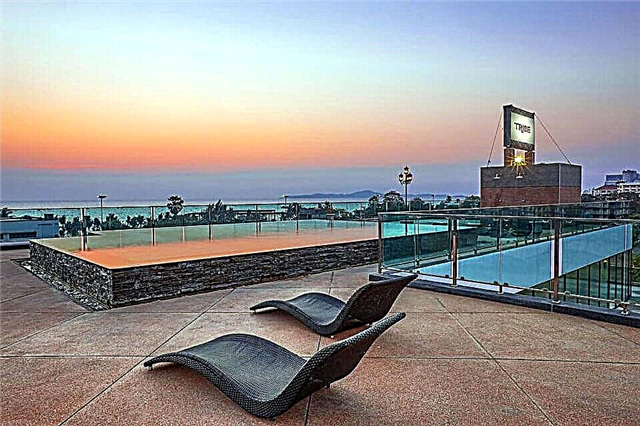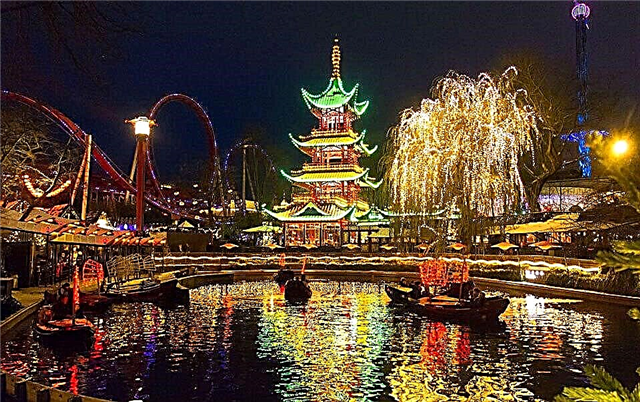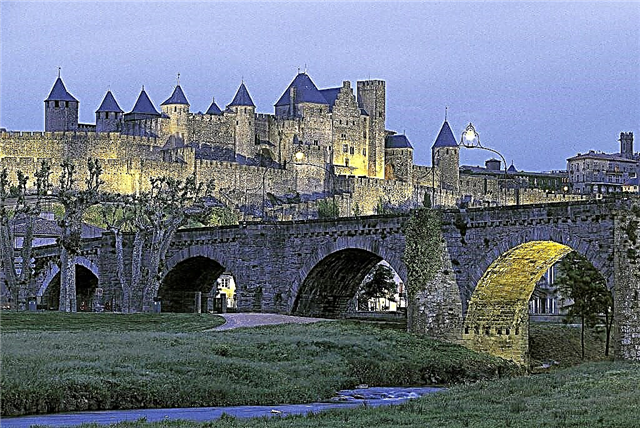Address: Russia, Nizhny Novgorod region, Nizhny Novgorod, Suzdalskaya street, 58
Build date: 1817 year
Architect: Mezhetskiy I.I., Kilevein R. Ya.
Shrines: ark with particles of holy relics, an icon of the Holy Women of Myrrhbearers
Coordinates: 56 ° 15'22.6 "N 43 ° 56'02.4" E
Content:
On the left bank of the Oka there is a church visible from afar. During the period of active anti-religious policy, which the state pursued in the 30s of the last century, it was one of the three city churches, where services practically did not stop. At the height of the Great Patriotic War, the church, although it was far from the front line, suffered from the bombing. Since the beginning of the 2000s, the ancient temple has been restored and is open every day for believers and tourists.

View of the church bell tower from the side of Hero Popov street
History of the Karpov Church
Previously, Karpovka was not a part of the city, but was a village near the tract that led to the Nizhny Novgorod Makaryevskaya fair. This settlement was founded in Zaochye in the XIV century, as a settlement in the Strelitsky camp, and since then it has retained the name of the local beekeeper (or beekeeper) - Karp. Strelitsa or Strelka in the old days was called a narrow strip of land at the confluence of two rivers. Abroad had low-lying and swampy lands, and therefore people tried to settle closer to the river banks.
In the documents of the XVI century, the settlement is described as the place of residence of the sovereign bee keepers. At that time, there were 7 yards in Karpovka. At the end of the 16th century, Boris Bodunov presented it to the nobles - the Bezdelkin brothers, and landowners' yards appeared near the peasant huts. A wooden church was erected here in 1722 with the blessing of Bishop Pitirim.
At the very beginning of the 19th century, this church was significantly damaged as a result of several fires, and the parishioners immediately began to ask the diocese for permission to build a new wooden church. However, since 1801, there was a government order not to rebuild burnt-out temples from wood, but to build them with stone. Therefore, the old church in Karpovka was demolished, and the villagers began to collect money and prepare the necessary building materials for a new stone church.
In 1817, the three-altar temple was built. The author of his project was the provincial architect Ivan Ivanovich Mezhetsky. He skillfully embodied in the new church all the best traditions of Russian architecture. The church turned out to be simple, laconic and restrained in the external decor. The prayer hall was completed by a high light drum, above which there was a small cupola. The north and south entrances were framed by four pilasters and classic triangular pediments. And at the very top was a forged cross covered with gilding. At the same time, the main throne was consecrated, dedicated to the Transfiguration of the Lord.

General view of the church
In 1838, a rural parish school was created at the church, and the young residents of Karpovka were given the opportunity to learn to read and write, and the basics of counting. Classes at the school were conducted by two teachers.
The temple was lucky - throughout its history there were always donors and benefactors who were ready to help with repairs or acquired the necessary liturgical utensils and icons. When, in 1869, the Karpovskaya church burned down again in a fire, thanks to the local residents of the Vyakhirevs, it was completely restored.
Provincial architect Robert Yakovlevich Kilevein rebuilt the Karpovskaya Church in a new way, significantly expanding the interior. Such reconstructions were caused by practical necessity. The temple in Karpovka was the only Orthodox church in several villages, and during church holidays it could not accommodate everyone who came for prayer. A second floor was built above the refectory, placing it flush with the main quadrangle, and the side-chapels were moved here.
R. Ya. Kilevein was not only a good civil engineer, he scrupulously studied ancient Russian temple architecture, actively collaborated with the academician of architecture Lev Vladimirovich Dal, and built a lot in the city according to his designs. Keelewein's particular attention was drawn to the carvings with which the old masters adorned wooden churches. Therefore, the architect transferred many elements of wooden folk architecture to the Karpovsky temple.
At the beginning of the 20th century, the interior of the church was painted with oil paints. The artists who did this work took as the basis for their plots and compositions the drawings made by the famous Russian painters Mikhail Vasilyevich Nesterov and Viktor Mikhailovich Vasnetsov. This painting has largely survived to this day.

View of the south facade of the church
After the coming of Soviet power, and especially during the active persecution of the church, most of the city's churches were liquidated. Karpovka Church was closed only in 1941, as the parish community did not pay tax to the budget of the city's regional financial department. However, in the summer of 1943, at the height of the Great Patriotic War, it was again handed over to the parishioners. The priests managed to serve in the church for only three days, when on the night of June 13-14, German bombers that had broken through to the city raided residential areas. During the bombing, five residents of Karpovka were killed and the church building was significantly damaged. Then it was renovated and in the summer of 1944 it was reopened to the faithful. By the end of the war, the temple had about 2,000 parishioners.
In the post-war years, the church underwent major repairs, the interior paintings and the gilded iconostasis were restored, and a choir was created. The area surrounding the building was covered with asphalt, and a special gatehouse was built for the church watchmen. They even found money to buy a Pobeda car, which the priests used to go to services. The number of parishioners grew steadily, and in May 1951, 20 thousand believers gathered for the Easter service in the Karpovskaya Church.
In the 2000s, restoration work was carried out here on the painting of the interior, which was directed by the artist Andrei Gennadievich Filippov.
Architectural features of the church
Karpovskaya Church was built in the tradition of classicism. The exterior is covered with plaster, and the decorative elements are whitewashed. During the reconstruction carried out by R. Ya. Kilevein, the temple was transformed from a one-domed into a five-domed one. At the same time, the windows of the second floor were decorated in a different way in the refectory. They began to be framed with relief platbands and neat triangular pediments.

View of the western facade of the church
The original look, conceived by I.I. Mezhetsky, only a high bell tower has preserved to this day. It is composed of a base-four and two eights standing on it. The entrance to the bell tower is framed by an expressive keeled arch. The lower tier of the building is completed with a triangular pediment, traditional for classicism. The second tier located above it is decorated with triple columns, which are also completed with pediments. The arched openings of this tier are filled with frescoes showing images of the Holy Trinity, the Ascension and Transfiguration of the Lord.
Higher still, on the third tier of the building, there are eight raised arches. And the dome is completed by a long spire, which resembles some buildings in St. Petersburg, built during the time of Peter I.
The current state of the temple and the visiting regime
The Orthodox Church is active and is open to everyone from 7.00 to 19.00, and on Sundays and holidays from 5.00 to 19.00. Church services are held here daily at 8.00 and 16.00. Patronal holidays are celebrated on May 22, August 19, October 14 and December 19. Particularly revered shrines of this church are the ark with parts of the relics of Christian saints, as well as several icons.
Sunday schools for both children and adults are open at the church, a biblical circle and a children's team have been created.On Saturdays, Bible history lectures are held for everyone to attend. The church has a parish choir, whose members perform sacred music and folk songs. There is a cinema club, a poetry lounge and a sobriety society. Parishioners regularly volunteer at a local juvenile center.
Nowadays, work is underway in the Karpov Church to create a church-historical museum, as well as the restoration of the iconostasis and icons.

Church domes
How to get there
The church is located in the Leninsky district. It stands near the Volga highway, opposite the Karpovsky market, on the street. Suzdalskaya, 58. Near the temple there is a bus stop and route taxis "Karpovskaya Church".











